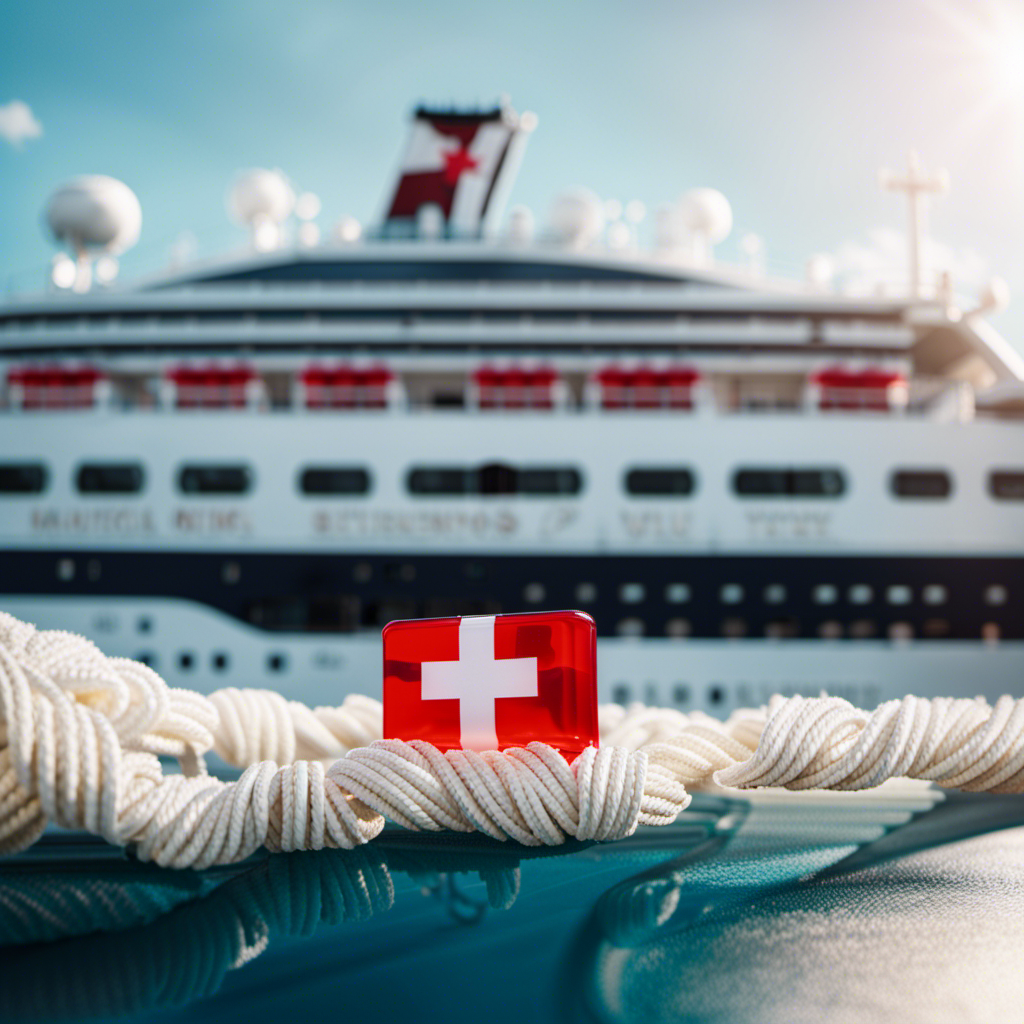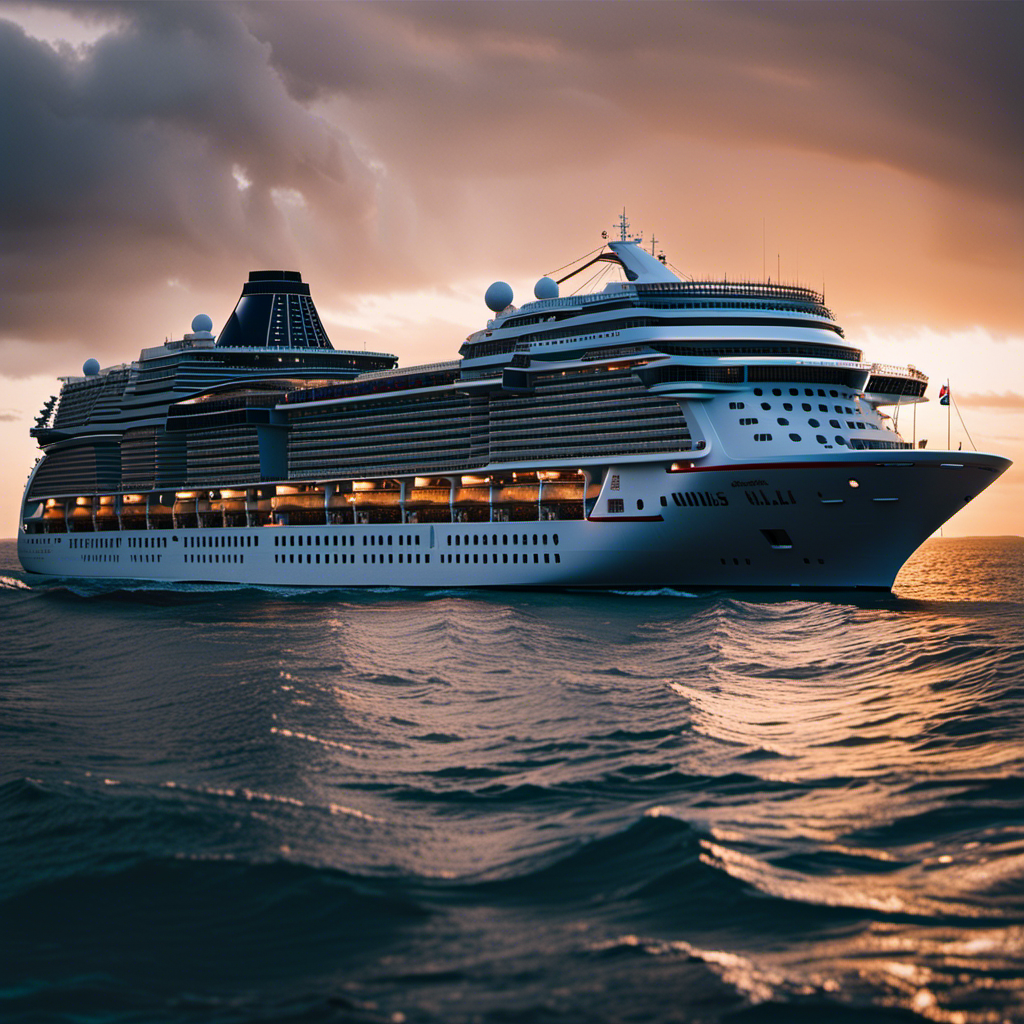In a surprising development, it has come to light that two individuals on the Celebrity Millennium cruise ship have received positive COVID-19 test results, even though every passenger on board was vaccinated. Indeed, the two guests, who were staying in the same room, are asymptomatic and have been isolated.
Now, this situation raises some interesting questions about the efficacy of vaccines and the need for stricter requirements for cruise passengers. Let’s dive into the implications of these cases and what they mean for all us vaccinated folks.
Key Takeaways
- Two passengers on the Celebrity Millennium cruise tested positive for COVID-19 despite being vaccinated.
- The cases highlight that vaccines have high efficacy but do not provide 100% protection against the virus.
- Even a small number of cases on cruises draw attention and fuel the debate over vaccine requirements for cruise passengers.
- The situation raises questions about sailing with a mix of vaccinated and unvaccinated passengers and impacts the battles between the cruise industry, CDC, and state governments.
The Presence of COVID-19 Cases on the Celebrity Millennium Cruise
I am concerned about the presence of COVID-19 cases on the Celebrity Millennium cruise. Two passengers on the cruise tested positive for the virus during required tests at the end of the trip. It is important to note that these individuals are asymptomatic and currently in isolation.
All crew and passengers on the cruise were vaccinated, and the ship set sail with slightly less than 600 people. While vaccines have high efficacy, they do not guarantee complete protection against the virus. The fact that cases were detected on a fully vaccinated cruise raises questions about the effectiveness of COVID-19 vaccines in preventing transmission.
This situation could impact public perception of vaccine efficacy and add fuel to the debate over vaccine requirements for cruise passengers. It is crucial to continue monitoring these cases and their implications for future cruise travel.
Vaccination Status of Passengers on the Cruise
All crew and guests aboard the cruise were vaccinated against COVID-19. The vaccination rates on the cruise were high, as all individuals received the vaccine. Vaccines have been proven to have high efficacy in preventing severe illness and hospitalization. However, it is important to note that vaccines do not provide 100% protection against the virus.
Despite the vaccinations, two passengers on the Celebrity Millennium cruise tested positive for COVID-19. These cases were discovered during the required tests at the end of the cruise. The infected individuals are currently asymptomatic and in isolation. Contact tracing and testing for close contacts are being conducted to prevent further spread.
While the cases are concerning, they represent a small portion of the vaccinated passengers on the ship. The majority of passengers remained unaffected by the virus. This highlights the effectiveness of vaccines in reducing the risk of infection and severe illness.
Overall, the presence of these cases emphasizes the importance of vaccination in preventing the spread of COVID-19. Vaccines significantly reduce the risk of infection and its severe consequences. However, it is crucial to remember that no vaccine is 100% effective, and breakthrough cases can still occur. Regular testing and adherence to health protocols remain essential in mitigating the risks associated with the virus.
Significance of the Cases for the Cruise Industry
The positive tests on the cruise highlight the ongoing concern surrounding the safety of cruise ships during the pandemic. These cases have a significant impact on public perception and raise questions about the effectiveness of vaccines in preventing the virus from spreading on board.
Cruise ships are already associated with the early days of the pandemic, and even a small number of cases draw attention. This situation adds fuel to the debate over vaccine requirements for cruise passengers. While Royal Caribbean International strongly recommends vaccination, it does not currently require it.
The industry is implementing rigorous health and safety protocols, but the cases on the Celebrity Millennium raise concerns about sailing with a mix of vaccinated and unvaccinated passengers.
The ongoing debate between the industry, CDC, and state governments is crucial in determining the future of cruising during the pandemic.
Statistics on COVID-19 Cases in the Cruise Industry
Roughly 400,000 passengers have sailed on cruises since the industry returned to limited capacity. The impact of vaccine requirements and the effectiveness of health and safety protocols are crucial in understanding the current situation.
Vaccination has been a key factor in the cruise industry’s efforts to mitigate the spread of COVID-19. While the recent cases on the Celebrity Millennium cruise highlight that the virus can still find its way onto ships, it is important to note that all crew and passengers on the cruise were vaccinated. Vaccines have high efficacy but do not provide 100% protection against the virus.
However, the industry is implementing rigorous health and safety protocols, including regular testing and contact tracing. These measures aim to minimize the risk and ensure the safety of passengers and crew members.
Future Implications for Sailing With Vaccinated Passengers
As someone closely following the cruise industry, I am intrigued by the ongoing debate surrounding the mix of vaccinated and unvaccinated passengers on future sailings. The recent cases on the Celebrity Millennium cruise have added fuel to this debate and raised questions about the implications for sailing with vaccinated passengers.
The impact of vaccine requirements on the cruise industry is significant. On one hand, requiring vaccinations can provide a higher level of protection against COVID-19 and reassure passengers of their safety. On the other hand, there is a debate over vaccine passports for cruise passengers, with some arguing that it could lead to discrimination or privacy concerns.
In this evolving landscape, there are two key points to consider:
-
Health and Safety: Requiring vaccinations can help prevent the spread of the virus and ensure a safer environment for passengers and crew.
-
Consumer Confidence: Vaccine requirements may instill confidence in potential passengers, leading to increased bookings and the industry’s recovery.
The debate over vaccine requirements for cruise passengers is complex, and finding the right balance between safety and individual rights will continue to be a challenge for the industry.
Current Status of the Celebrity Millennium Cruise and Its Repositioning Plans
Currently sailing in the Caribbean, the Celebrity Millennium cruise is making preparations for its repositioning to Seattle.
The current status of the cruise ship is that it has been dealing with two cases of COVID-19 among its passengers. These cases were detected during the required tests at the end of the cruise. The infected passengers were asymptomatic and are currently in isolation. Contact tracing and testing for close contacts are underway to prevent further spread.
Despite these cases, it is important to note that all crew and passengers on the cruise were vaccinated, and the two cases represent only a small portion of the total passengers. The cruise industry has been implementing rigorous health and safety protocols, and the situation on the Celebrity Millennium raises questions about sailing with a mix of vaccinated and unvaccinated passengers.
As the cruise ship prepares for its repositioning to Seattle, it will be interesting to see how the industry adapts and responds to these challenges.
Frequently Asked Questions
How Many Total Cases of COVID-19 Have Been Detected on the Celebrity Millennium Cruise?
There were multiple COVID-19 cases detected on the Celebrity Millennium cruise. The implications for vaccinated passengers are still being assessed.
What Measures Are Being Taken to Ensure the Safety of Close Contacts of the COVID-19 Positive Passengers?
Contact tracing protocols and quarantine procedures are being implemented to ensure the safety of close contacts of the COVID-19 positive passengers on the Celebrity Millennium cruise.
What Is the Current Debate Surrounding Vaccine Requirements for Cruise Passengers?
The current debate surrounding vaccine requirements for cruise passengers involves weighing the pros and cons of mandating vaccines. Legal implications are also considered, as some states ban proof of vaccination for cruises.
How Many Passengers Were on Board the Celebrity Millennium Cruise?
There were slightly less than 600 passengers on board the Celebrity Millennium cruise. The impact of the cases on future cruises raises questions about the number of vaccinated passengers and the need for stricter requirements.
What Are the Health and Safety Protocols Being Implemented by the Cruise Industry?
The cruise industry has implemented rigorous health and safety protocols in response to outbreaks on other ships. These protocols impact the cruise experience, ensuring passenger safety and reducing the risk of COVID-19 transmission.
Claire, a creative soul with an unquenchable thirst for storytelling, is an integral part of the Voyager Info team. As a dedicated writer, she weaves captivating narratives that transport readers to enchanting cruise destinations and beyond.
Claire’s love affair with writing began at an early age when she discovered the magic of words and their ability to craft worlds and emotions. Her innate curiosity led her to explore various literary genres, but it was travel writing that truly captured her heart. Drawing inspiration from her own globetrotting adventures and encounters with diverse cultures, Claire embarked on a journey to become a travel writer par excellence.











